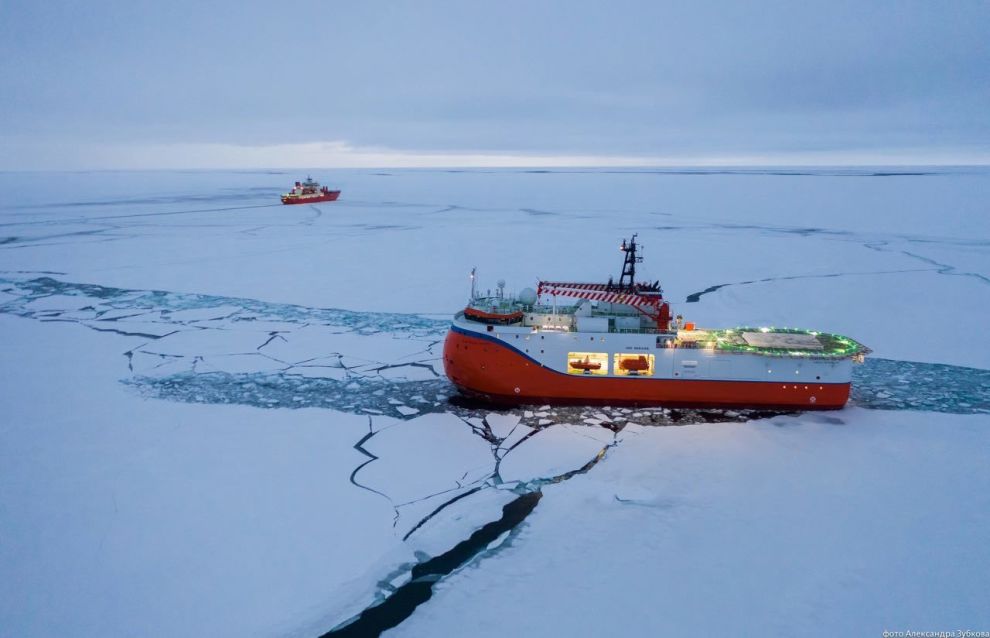Replacement crew arrives at North Pole station after 10 months
A new crew of polar explorers bearing scientific research equipment and food supplies has reached the North Pole-41 polar station, which has been drifting in high latitudes for more than 10 months. The Akademik Tryoshnikov research vessel delivered the personnel and goods, docking at the station at 83.35° N 50.4° E in the Arctic Ocean.
It took less than four days for the ship to travel from Murmansk to the drifting station. The best course for the ship to reach the ice-resistant platform was plotted with the help of aerial reconnaissance from a Ka-32 helicopter. Moving across the ice fields at an average speed of 6-8 knots, the Akademik Tryoshnikov approached the North Pole platform and closely moored to it on the port side, allowing expedition staff and cargo to be delivered to the camp easily and safely.
As the two vessels will be drifting together, they plan to examine the drifting mesoscale buoys and install additional drifting equipment north of the site. Data from drifting buoys are used to adjust forecasts of ice conditions on the Northern Sea Route.
“It is the height of summer in the Arctic, and gradual destruction of the ice and reduction of the ice area are observed in the vicinity of the drifting station,” Alexander Makarov, Director of the Arctic and Antarctic Research Institute, said. “The underside of the ice floe that the station is moored to is melting, and there are noticeable thaw holes and snow puddles of up to 40 cm deep. The ice condition does not allow for safe research on the ice, so the equipment was taken aboard the vessel and scientific work is carried out from the ice-resistant platform. At the same time, satellite monitoring has shown several extensive ice fields not far from the station. If helicopter reconnaissance confirms these reports, and our specialists choose a more stable ice floe for the camp, we will try to re-moor the ice-resistant platform to a new floe. This will significantly increase the station’s drift time and enable it to collect additional materials on the changing climate of the Arctic region,” he added.
The joint work is expected to take 10 days; after that, the Akademik Tryoshnikov will return to Murmansk. The polar expeditions are organized by the Arctic and Antarctic Research Institute.
